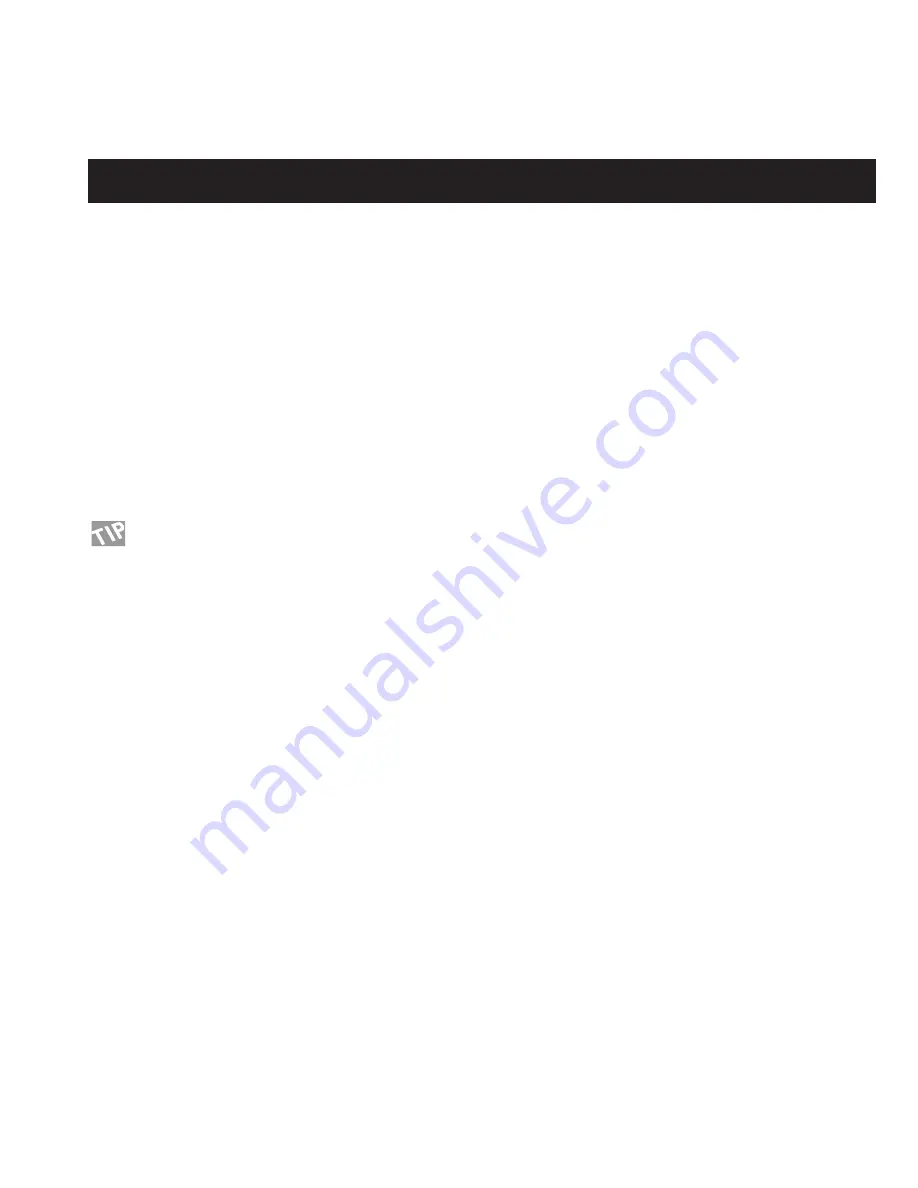
Use the Parameter wheel to scroll up and down, and the Value
wheel to change values.
Press Exit to leave the Edit parameter display again.
Mix
In the Mix display, you are able to balance the mix and the In
Level of the effects in that particular preset. If an effect is
bypassed, it will appear as grayed out, however, you can still
change the level and mix of that particular effect. A small PPM
shows the input level of each block. When two signals are joined
together there may be occasional overshoots. The meters of each
block are therefore placed at the very input of the current block.
This means that in case of overloads you should turn down the
level of the previous blocks.
Use the Parameter wheel to scroll through the parameters and
change values by dialing the Value wheel. Press Enter to activate
the current effect or Exit to bypass it.
Layout
In addition to the Routing display, you have a couple of Layout
tools. The Layout display can make certain actions very much
easier. The functions of the Layout are very much like those of a
spreadsheet.
In the Layout display, you see a miniature version of the Routing.
By turning the Value wheel, you can change the cursor position.
Now dial the Parameter wheel to select the desired function.
Column
Move L - Will move the current Column to the Left.
Move R - Will move the current Column to the Right.
Insert - Will insert a new Column.
Delete - Will delete the current Column.
Row
Move U - Will move the current Row up.
Move D - Will move the current Row down.
Insert - Will Insert a new Row.
Delete - Will delete the current Row.
Press Enter to carry out the selected function.
EFFECTS
21
If you want to Edit one of the eight effects, press the Effects key. In the header of the effects display you can choose
between - Mix, Edit, Routing, and Layout. By using the < > Arrow keys you can step between the four displays. If an
effect is bypassed, it will appear with no bottom line.
Editing an effect
Press the Effects key and select the Edit display (using the < >
Arrow keys). Double click on the block bypass key of the effect
you want to edit, or point the cursor to the block you want to
edit, and press Enter to access the Edit parameter display.
Note that you can also select the In and Out section, e.g. the
Noise Gate is placed in the In-section.
When you are in the Edit parameter display, use the Parameter
wheel to scroll through the parameters and the Value wheel to
change values.
Press Exit or double click the block bypass key to leave the edit
parameter display.
Double clicking another block bypass key will take you
directly to edit parameter display of that particular effect.
Changing the Sub-algorithm
In each effect block you can choose between a couple of
variations of the current effect, for example, in the Chorus block
you can choose between Classic Chorus, Advanced Chorus,
Classic Flanger and Advanced Flanger. To change the Sub-
algorithm, you enter the Effect Edit parameter display and then
use the < > Arrow keys to jump to the effect Sub-algorithm
(upper left corner of the display). Now use the Parameter wheel
to select the new Sub-algorithm and press Enter to confirm.
Routing
If you want to change the Routing or order of the effect blocks,
use the < > Arrow keys to select the Routing display.
Use the Parameter wheel to select where you want to place an
effect block, and double click the block bypass key of the effect
you want to insert, or scroll through the effects using the Value
wheel, and press Enter to choose the current effect.
If you simply want to lead the sound through a point, you select
the pipeline icon.
The full Routing matrix is 4 high by 8 wide and you can place
any effect (without duplication) anywhere in the matrix.
Editing directly from the Routing display
If you want to edit an effect right away, press Enter to access the
Edit parameter display.
Summary of Contents for G-Force
Page 1: ...G Force GUITAR EFFECTS PROCESSOR USER S MANUAL...
Page 2: ...2...
Page 4: ...4...
Page 32: ...UTILITY This page is intentionally left blank...






























